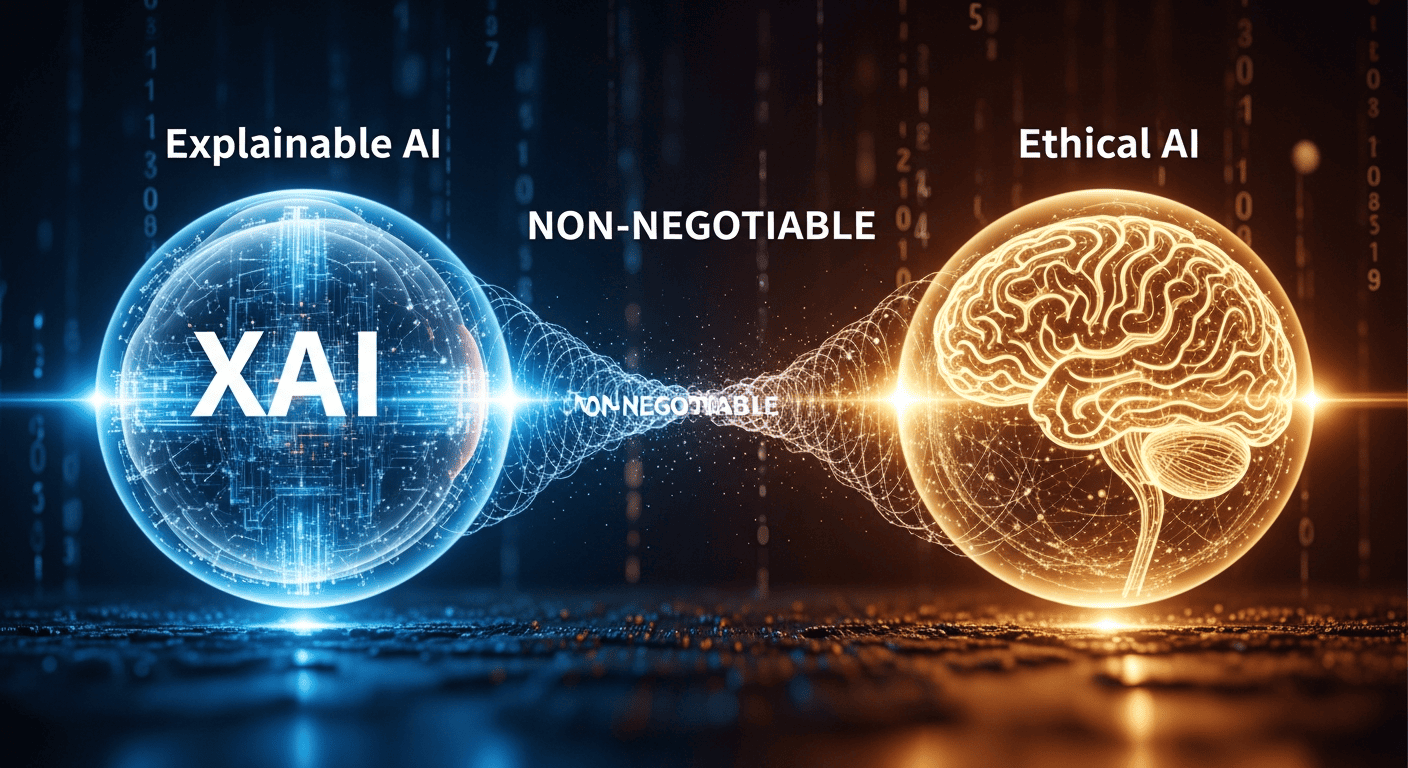Explainable & Ethical AI: Why Transparent Intelligence Is Becoming Non-Negotiable

Explainable & Ethical AI (XAI) has rapidly shifted from a technical aspiration to a global expectation. As AI systems influence decisions that affect people’s livelihoods, safety, and rights, regulators and industry leaders are demanding transparency and accountability. The push toward XAI is reshaping how models are built, audited, and deployed — setting the foundation for a new era of human-aligned, trustworthy AI. This movement is redefining innovation across enterprises, governments, and consumer applications.
Background & Context
The rise of advanced neural networks — especially large language models — introduced an era of “black box” AI, where systems deliver powerful results but provide little clarity on how decisions are made. This opacity raised concerns about bias, discrimination, and safety. Over the past three years, high-profile AI failures in hiring, lending, and law enforcement sparked global calls for transparency.
Regulatory frameworks such as the EU AI Act and emerging policies in the U.S. and India have accelerated the demand for explainability. Enterprises, especially in finance and healthcare, now view XAI as a compliance requirement rather than an optional feature.
Expert Voices Shaping the Conversation
Industry experts consistently stress that without transparency, AI cannot be trusted.
According to Dr. Samir Gupta, an AI governance researcher, “Explainable AI is not just about understanding models — it’s about ensuring accountability, fairness, and the ability to challenge decisions.”
Meanwhile, analyst Rebecca Lin notes that enterprises are increasingly adopting model interpretability tools as part of their risk management strategy. “Auditable AI pipelines will be mandatory by 2026, similar to cybersecurity protocols today.”
Such expert perspectives illustrate how deeply XAI is being integrated into mainstream AI development.
Industry Comparisons & Market Trends
As competition accelerates, companies are differentiating themselves through transparency:
- Google and Meta have added safety layers and model cards for transparency.
- Microsoft is investing in Responsible AI dashboards to expose model reasoning.
- OpenAI is exploring techniques to make advanced reasoning models auditable.
- Startups like Anthropic, Credo AI, and Fiddler AI are building specialized governance and interpretability tools.
Meanwhile, heavily regulated sectors such as banking and insurance are making XAI mandatory for their automated risk models. Across industries, organizations see transparency as a competitive advantage — not just a defensive measure.
Implications & Why It Matters
The shift toward Explainable & Ethical AI impacts everyone — consumers, developers, policymakers, and businesses:
- Trust: Users gain confidence when AI decisions are interpretable.
- Safety: Transparent systems are easier to monitor, audit, and correct.
- Fairness: XAI helps detect and reduce bias in datasets and models.
- Compliance: Global regulations increasingly require explainability.
- Adoption: Businesses are more likely to deploy AI when they understand the risks.
In a world where AI influences job applications, medical triage, credit evaluations, and even daily digital experiences, explainability is becoming foundational to societal trust.
What’s Next
Over the next two years, XAI will evolve from interpretability tools into fully integrated responsibility frameworks. Expect rapid advances in:
- Real-time model monitoring dashboards
- Automated bias detection systems
- Transparent reasoning layers for LLMs
- AI agents with self-explainable decision paths
- Industry-wide XAI certifications for compliance
As government oversight increases, organizations that embrace XAI early will be better prepared for audits, user expectations, and competitive pressures.
Our Take
Explainable & Ethical AI is emerging as the defining feature of trustworthy intelligence. As AI becomes deeply woven into decision-making, systems that can justify their actions will hold the greatest value. XAI marks a shift toward a more human-aligned ecosystem — one where innovation is guided by clarity, fairness, and responsibility rather than unchecked complexity.